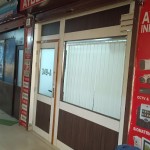Closed-Circuit Television (CCTV) systems have become a cornerstone of modern security strategies, offering a range of solutions to meet diverse needs. Whether you're looking to secure a small home or a large commercial property, there is a CCTV system designed to fit your requirements. Here’s a comprehensive overview of the different types of CCTV systems available:
1. Analog CCTV Systems
Analog CCTV systems are the traditional type of CCTV setup. They use analog cameras to capture video footage, which is then transmitted via coaxial cables to a Digital Video Recorder (DVR). The DVR converts the analog signals to digital, storing the footage for later review.
Pros:
- Cost-effective
- Easy to install and use
- Reliable for basic security needs
Cons:
- Lower image quality compared to digital systems
- Limited scalability
- Requires separate cabling for power and video
2. Digital CCTV Systems
Digital CCTV systems, also known as IP (Internet Protocol) cameras, capture and transmit video in a digital format. These systems use network cables to send data to a Network Video Recorder (NVR), which stores and manages the footage.
Pros:
- High-definition video quality
- Scalable and flexible
- Can integrate with other digital systems (e.g., alarm systems)
- Supports remote viewing and management
Cons:
- More expensive than analog systems
- Requires a robust network infrastructure
- Can be more complex to set up
3. Wireless CCTV Systems
Wireless CCTV systems use Wi-Fi to transmit video data from the cameras to the recording device. These systems eliminate the need for extensive cabling, making them easier to install and less obtrusive.
Pros:
- Easy and quick to install
- Flexible camera placement
- Ideal for locations where wiring is difficult
Cons:
- Potential for signal interference
- Dependent on network reliability
- Limited range compared to wired systems
4. Wired CCTV Systems
Wired CCTV systems are similar to analog and digital systems but can encompass both analog and IP cameras. They require physical cables for power, video, and internet connection.
Pros:
- Reliable and stable connection
- Consistent video quality
- Less susceptible to interference
Cons:
- Complex installation
- Limited flexibility in camera placement
- Higher installation costs due to cabling
5. PTZ (Pan-Tilt-Zoom) CCTV Systems
PTZ cameras can pan (move left or right), tilt (move up or down), and zoom in and out. These cameras are often used in areas requiring active monitoring, as they can cover a wide area and focus on specific details.
Pros:
- Wide coverage area
- High level of detail with zoom
- Can be controlled remotely
Cons:
- More expensive than fixed cameras
- Requires active monitoring to maximize benefits
6. Day/Night CCTV Systems
Day/Night CCTV cameras are designed to function effectively in varying lighting conditions. They have special sensors that adjust to low light or complete darkness, making them ideal for outdoor surveillance.
Pros:
- Effective in low light and nighttime conditions
- Provides clear images regardless of lighting
Cons:
- Can be more expensive than standard cameras
- May require additional lighting in extremely dark environments
7. Thermal CCTV Systems
Thermal cameras detect heat rather than visible light, making them ideal for monitoring in complete darkness or through smoke, fog, or dust.
Pros:
- Effective in total darkness and challenging environments
- Can detect people and objects by their heat signatures
Cons:
- High cost
- Limited detail in the footage (best used in conjunction with other types of cameras)
8. High Definition (HD) CCTV Systems
HD CCTV systems offer superior video quality, capturing high-resolution images and videos. These can be either analog (HD analog cameras) or digital (HD IP cameras).
Pros:
- Superior image quality
- Better for identifying details and facial recognition
- Useful for forensic analysis
Cons:
- Requires more storage capacity
- Higher cost for cameras and recording equipment
Conclusion
Choosing the right CCTV system depends on various factors, including your specific security needs, budget, and the environment where the system will be installed. Analog systems may be sufficient for basic surveillance, while digital and HD systems offer higher quality and advanced features for more comprehensive security. Wireless and PTZ cameras provide flexibility and extensive coverage, whereas day/night and thermal cameras ensure visibility in challenging conditions.
By understanding the different types of CCTV systems available, you can make an informed decision that best fits your security requirements, ensuring that your property, assets, and loved ones are well-protected.






Comments